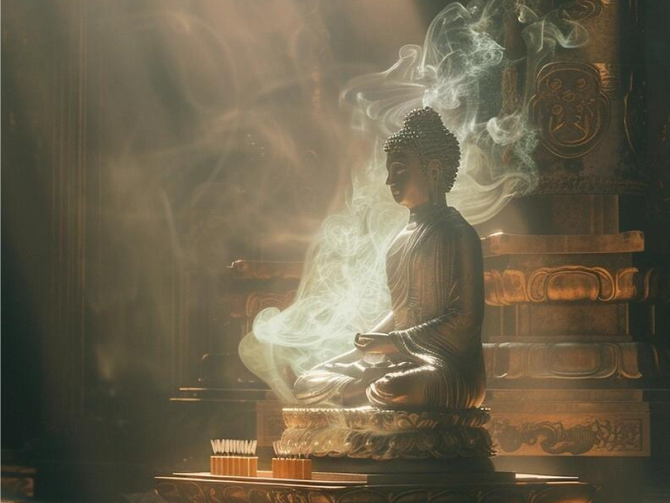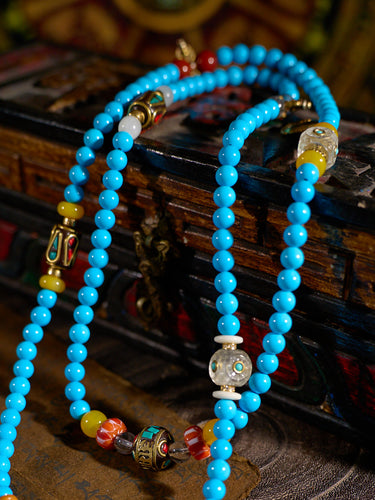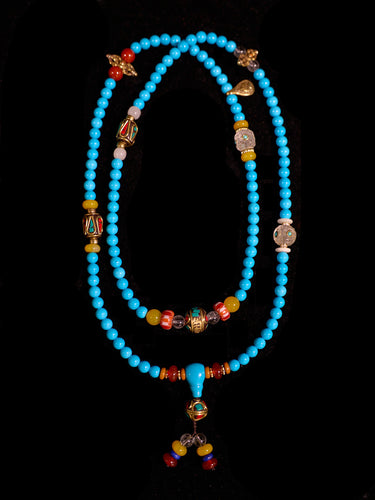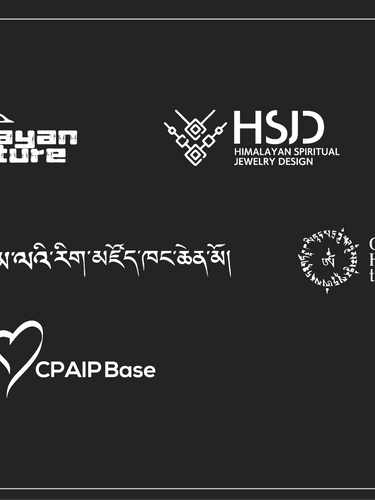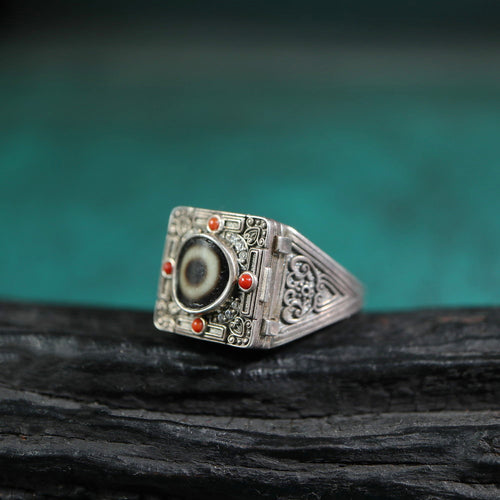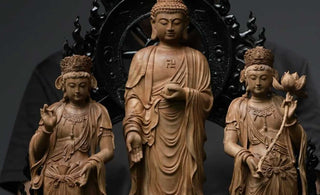
In this article, we delve into the captivating world of the Three Western Saints Amitābha Buddha, exploring their significance, symbolism, and the profound impact they have had on oriental art. Join us on a journey of enlightenment and discovery as we unravel the Triad of Serenity.
The Three Western Saints
Amitābha Buddha, also known as Amitāyus or the Buddha of Infinite Light, is a central figure in Mahayana Buddhism. Associated with the Western Pure Land, Amitābha Buddha is revered for his compassion, wisdom, and the promise of salvation. The Triad of Serenity comprises Amitābha Buddha and two bodhisattvas, Avalokiteshvara and Mahasthamaprapta, who assist him in guiding beings towards enlightenment. The imagery of the Three Western Saints can be found in various forms of oriental art, including paintings, sculptures, and temple adornments. These artistic representations capture the serene and compassionate presence of Amitābha Buddha, the empathetic gaze of Avalokiteshvara, and the dignified posture of Mahasthamaprapta. Collectors and enthusiasts of oriental art are drawn to these representations for their deep symbolism and the spiritual resonance they evoke.
Amitābha Buddha: The Buddha of Infinite Light
Amitābha Buddha, revered as the Buddha of Infinite Light, holds a significant place in Mahayana Buddhism and has captivated the hearts and minds of countless devotees throughout history. His name, Amitābha, translates to "Infinite Light" or "Boundless Radiance," symbolizing his luminous and compassionate nature. Amitābha Buddha is believed to reside in the Western Pure Land, Sukhavati, a realm of enlightenment and bliss. The concept of the Pure Land emerged as a response to the challenges of attaining enlightenment in the present world. It offers devotees an accessible and ideal environment to cultivate their spiritual practice and ultimately achieve liberation. The Pure Land teachings emphasize the power of Amitābha Buddha's vows and his compassionate nature to assist beings in their journey towards enlightenment. According to these teachings, Amitābha Buddha made forty-eight vows, the most important of which is the Eighteenth Vow. In this vow, he promises that anyone who sincerely calls upon his name and aspires to be reborn in his Pure Land will be welcomed and guided towards liberation. Amitābha Buddha is often depicted in a seated meditation posture, known as the "Dhyana Mudra," with his hands resting on his lap, palms facing upward. This gesture symbolizes tranquility, inner peace, and deep concentration. His golden complexion radiates a serene and compassionate aura, drawing devotees towards his enlightened presence.
In Buddhist art, Amitābha Buddha is portrayed with various symbolic elements. He is adorned with the thirty-two major marks of a Buddha, including the ushnisha (a cranial protuberance) and the urna (a small tuft of hair between the eyebrows). These physical attributes represent his enlightened qualities and serve as reminders of his extraordinary spiritual attainment. The lotus flower is another significant symbol associated with Amitābha Buddha. The lotus, rooted in the mud and yet blossoming above the water's surface, symbolizes purity, enlightenment, and the potential for spiritual growth. Amitābha Buddha is often depicted seated on a lotus throne, signifying his transcendence over the mundane world and his ability to guide beings towards liberation.
Devotees of Amitābha Buddha engage in various practices to connect with his compassionate energy and aspire to be reborn in his Pure Land. One such practice is the recitation of his name, known as the "Nianfo" or "Nembutsu." By chanting "Namo Amituofo" or "Namo Amida Butsu" (meaning "Homage to Amitābha Buddha"), devotees express their reverence, invoke his blessings, and cultivate a deep sense of gratitude and faith. The imagery of Amitābha Buddha and the teachings of the Pure Land tradition have had a profound influence on oriental art. Artists have depicted him in various mediums, including paintings, sculptures, and calligraphy, capturing his serene countenance and radiating compassion. These artistic representations not only serve as objects of veneration but also inspire devotees to cultivate inner peace, mindfulness, and a sincere aspiration for enlightenment.
Avalokiteshvara: The Bodhisattva of Compassion
Avalokiteshvara, also known as Guanyin or Kannon, is a bodhisattva associated with compassion and mercy. Often depicted with multiple arms and eyes, Avalokiteshvara embodies the boundless compassion of Amitābha Buddha. This bodhisattva, known as the "Hearer of Cries," listens to the suffering of sentient beings and offers solace and assistance.
The representation of Avalokiteshvara in oriental art captures the essence of compassion and empathy. The bodhisattva's compassionate gaze and gentle demeanor provide solace to those in distress. Collectors and artists can appreciate the intricate details and artistic craftsmanship of Avalokiteshvara's depictions, reflecting the devotion and reverence for this bodhisattva's compassionate nature.
Mahasthamaprapta: The Bodhisattva of Great Strength
Mahasthamaprapta, also known as Da Shizhi or Seishi Bosatsu, is a revered bodhisattva in Mahayana Buddhism. The name "Mahasthamaprapta" translates to "The Bodhisattva of Great Strength" or "The One of Great Power." As a prominent figure in Buddhist iconography and doctrine, Mahasthamaprapta represents wisdom, spiritual strength, and the ability to overcome obstacles on the path to enlightenment. Mahasthamaprapta is often depicted in a dignified posture, with one hand resting on the knee and the other holding a lotus blossom or a sutra. The lotus symbolizes purity and the potential for spiritual growth, while the sutra represents the wisdom and teachings of the Buddha. The bodhisattva's poised and composed expression reflects inner strength, resolve, and deep understanding.
In Buddhist scriptures, Mahasthamaprapta is described as a close attendant of Amitābha Buddha, working alongside Avalokiteshvara to guide beings towards enlightenment. Together, the Triad of Amitābha Buddha, Avalokiteshvara, and Mahasthamaprapta form a harmonious relationship, with Mahasthamaprapta representing the wisdom and strength necessary to overcome the challenges encountered on the spiritual path.
In summary, the Three Western Saints, Amitābha Buddha, Avalokiteshvara, and Mahasthamaprapta, form a sacred trinity in Mahayana Buddhism. They represent compassion, wisdom, and the path to enlightenment. Devotees revere Amitābha Buddha as the Buddha of Infinite Light and aspire to be reborn in his Pure Land. Avalokiteshvara embodies boundless compassion, while Mahasthamaprapta represents spiritual strength and wisdom. Together, these three figures inspire and guide beings on their spiritual journey, offering solace, compassion, and the tools necessary to overcome obstacles and attain enlightenment. With a focus on the Triad of Serenity, including Amitābha Buddha, Avalokiteshvara, and Mahasthamaprapta, we offer a diverse collection of artworks that capture the essence of serenity, compassion, and wisdom.



